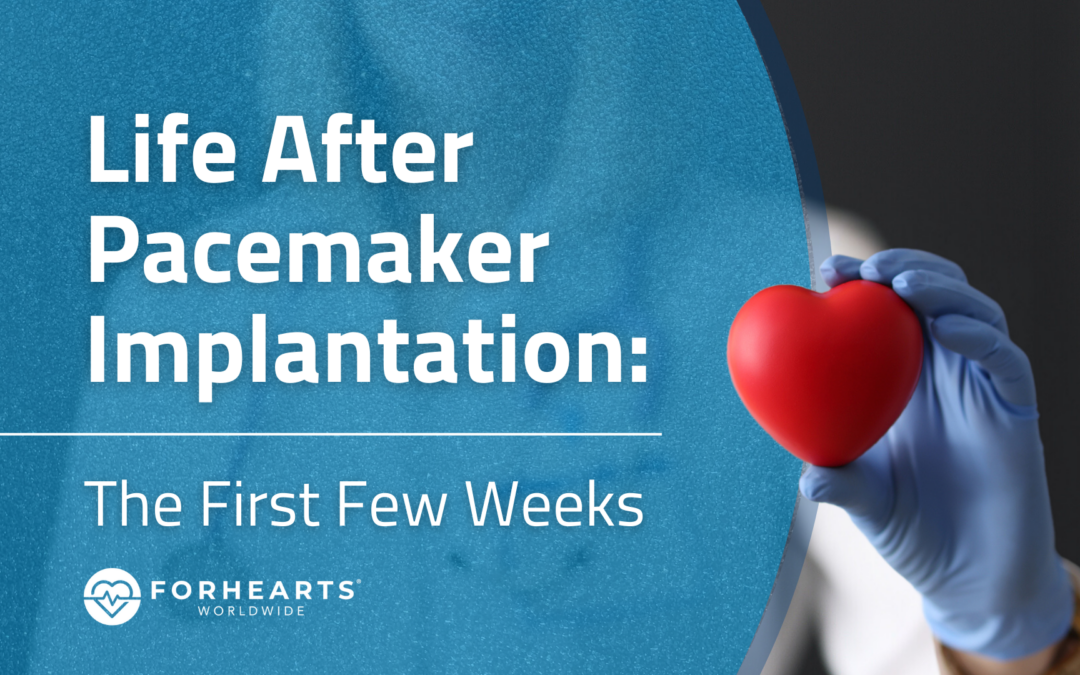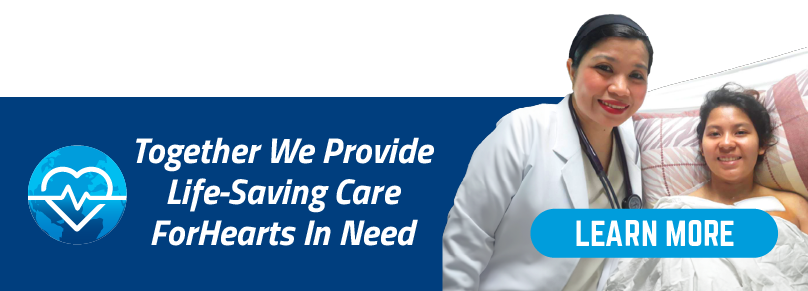Getting a pacemaker implanted is a life-changing (and life-saving!) experience. That’s because arrhythmia and other heart rhythm issues that once diminished the quality and length of life are now treatable and manageable thanks to high-tech pacing devices.
Fully living with a pacemaker means getting off to the right start. That’s why the first few weeks after pacemaker implantation are crucial for your healing and adjustment. We’ll walk you through the recovery timeline so you can know what to expect, what to watch for, and how to best care for yourself so you can focus on feeling better and embracing your pacemaker-powered life!
Right After Surgery
Pacemaker implantation can be performed as an outpatient procedure. However, it is most common to spend 24 hours (overnight) in the hospital for observation to ensure the pacemaker is performing properly and you are responding well. Part of this includes watching your initial physical response while you’re in the recovery room. Your incision site may be quite sore, so you’ll receive pain medication through an IV. You should be able to eat and drink by that evening.
The next day, your medical team will check to make sure your pacemaker is performing properly. This can include an X-ray to check pacemaker and lead placement, an electrocardiogram to read your heart rhythm, and a programming check of your device to ensure it is working properly. Most current pacemakers are capable of communicating and sending data remotely, and you may get instructions on how to set up monitoring on your smartphone or a transmitter you will plug in at home.
If everything is working correctly, you’ll be discharged with instructions for medication and incision care.
The First 24 to 72 Hours After Surgery
In the first days after your implantation procedure, you’re going to feel it. After all, you just had surgery! Here’s what to know for the first 24 to 72 hours after your pacemaker is implanted.
Incision Care
Your doctor will give you instructions on incision care. Below the dressing you may find Steri-Strips which help hold your incision together. These will start to peel off after several days as you begin to wash your body. Stitches holding the wound together will dissolve over time and won’t need to be removed. You’ll want to keep your pacemaker incision area clean and dry, so don’t put any powder, lotion, rubbing alcohol, or antiseptic solutions on the incision. Wearing loose-fitting tops (and no bra) will be the most comfortable.
You’ll want to monitor your incision until the skin edges are fully healed, which should be four to six weeks. If the skin around the incision becomes warm, red or swollen or the incision has drainage, it may have become infected. Contact your doctor as soon as possible.
Medications
You should be able to resume any prescription medications within 24 hours. If you’re on blood thinners, your doctor may have special instructions or precautions. You should have received a prescription for pain medication from your doctor. If not or you don’t feel comfortable taking prescription pain medications, you can take an over-the-counter pain reliever. Acetaminophen (or Tylenol) is generally considered a safer over-the-counter pain reliever for people with heart conditions.
Eating
You should be able to resume your regular diet within 24 hours. You should have no dietary restrictions, unless you’re already on a restricted diet. If your stomach still feels a little queasy, this is most likely from the anesthesia used for the procedure and not because of the pacemaker. Eat bland, low-fat foods like toast, plain rice, broiled chicken, and yogurt until you’re feeling better.
Washing
You can take a bath or shower after 48 hours of your procedure unless instructed otherwise by your provider. However, you need to keep the incision site mostly dry for the first week (five to seven days). This can create quite a predicament. Covering your incision site and dressing with plastic wrap or a plastic bag can help you keep the area dry. Then, gently pat the surrounding area once you remove the plastic.
Sleeping
Like with any surgery, you may find it hard to get comfortable and sleep right after your pacemaker implantation. It’s best to avoid sleeping on the side where the pacemaker was implanted (typically the left side) immediately following your surgery. Sleeping on your back or on your opposite side is usually more comfortable until your incision heals.
Four to Six Weeks After Surgery
Your pacemaker incision site should be fully healed within four to six weeks. Depending what type of work you do, how active you are, and how you feel (and heal), you should be able to return to your daily routine after several days and essentially all everyday activities within a few weeks.
Clothing Comfort
You should be able to return to your regular wardrobe by this time. However, you may find that your bra is causing discomfort over or around your pacemaker implantation site. Changing your bra style in these weeks after your surgery (like to a sports bra or strapless bra) can keep you comfortable as you heal. You may also consider getting a strap pad that you can easily attach to your bra strap for extra cushioning. If the act of simply putting on your bra is causing discomfort, you may want to go braless and opt for a camisole or undershirt instead.
Driving
You should be able to drive yourself a week after the procedure. However, you may find that the seat belt crossing over your left shoulder and chest bothers your incision site. You can buy a padded seat belt cover for your car to give yourself some extra cushion and comfort, or you can DIY one using a folded towel or small blanket placed between your pacemaker incision site and the seat belt.
Reaching, Lifting and Carrying
You’ll want to avoid heavy lifting (over 10 pounds) and limit upper arm movements (raising, reaching, lifting) on the side of your pacemaker (typically the left side) for up to four to six weeks after your procedure. This means simple, day-to-day actions like reaching up to place something on or off a shelf, hanging up clothes, zipping up your dress, carrying a bag of groceries, raking leaves, throwing a backpack or purse over your left shoulder, or even picking up your baby or pet should be avoided or done with caution. Use your right arm when you’re able, opt for wheeled backpacks and grocery baskets, and don’t be afraid to ask for assistance.
Physical Activity and Exercise
As part of your recovery, you’ll have doctor-instructed exercises, like daily shoulder rolls to help prevent stiffness. Doing these exercises for the first six to eight weeks as you’re healing after your surgery is important for avoiding long term discomfort. You can start to ease back into physical activity with low-intensity exercises like walking or slow biking. Avoid any activities or exercises with upper body movements or that put pressure on your arms and chest.
Before jumping back into an exercise routine or contact sports, be sure to consult with your doctor. They can give you a timeline for when you’re ready for more intense physical activity and may have specific guidelines for exercising with a pacemaker or personalized recommendations based on your health and type of device.
Support for Your Pacemaker-Powered Life
Once implanted and the surgical site is healed, a pacemaker should not diminish your day-to-day or physical activities. In fact, you may find it’s quite the opposite as your pacemaker works to regulate your heart’s rhythm.
As a pacemaker recipient, you’re a member of a special club—and there’s an actual Pacemaker Club here for you! This online community is where people living with cardiovascular devices can connect, share information, and support one another. As part of the ForHearts mission to provide life-saving cardiovascular devices to people in need around the world, we are excited to partner with the Pacemaker Club.
Won’t you partner with us in our work to provide life-saving pacemakers? Explore our donation opportunities.





How long after having a pacemaker fitted will it be before I feel any benefit. Will it be straight away, a few days or even weeks.
I felt it helping my heart beat immediately were I would drop to 66 beats per minute with the pacer I can’t go below 60 it feels refreshing
I just had pacemaker surgery. I’m assuming it’s normal the my neck muscles and shoulder area and around the incision feel sore and tender still? How long does that last it’s only been 48hrs for me.
My shoulder and neck were very sore for a week. I still have some soreness right under the shoulder blade. My neck is not in pain. My surgery was on February 25. Make sure that you are icing several times a day.
I had my pacemaker implanted one week ago. Soreness was mush less after several days and overall felt better within 48 hours. My pacemaker is to slow down my heart rate. Due to persistent Afib my rate was constantly in the 115-125 BPMs. I’ve had 3 ablations and a half dozen cardioversions, none of which lasted more than about a year. It was exhausting and frustrating. The pacemaker is set at 90 BPM now and in a week it will get set at 80 BPM. After a couple more weeks it will be set to a normal rate, 60-65 BPM. Can’t wait.
What about emotional trauma? I was in excellent health when heart failure came out of nowhere. Never been in surgery or on medication so this was a shock when I was rushed into surgery to save my life. I have always been a happy positive person. Now I find myself dwelling on death and fighting fear. Has anyone else felt like this?
It’s been 5 days and I am still waiting for my energy to get better. My HB was 37 ,now 80 to 90.